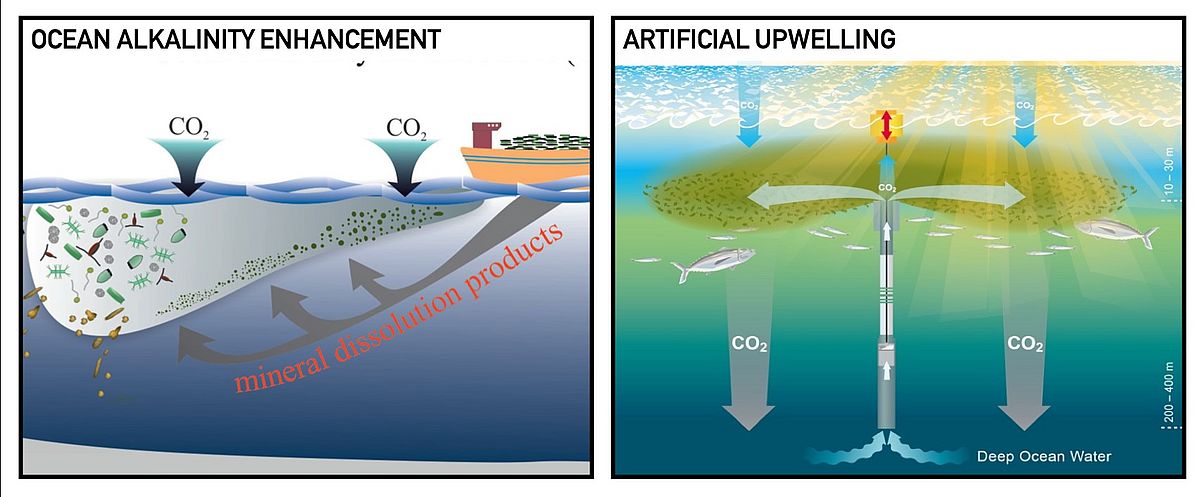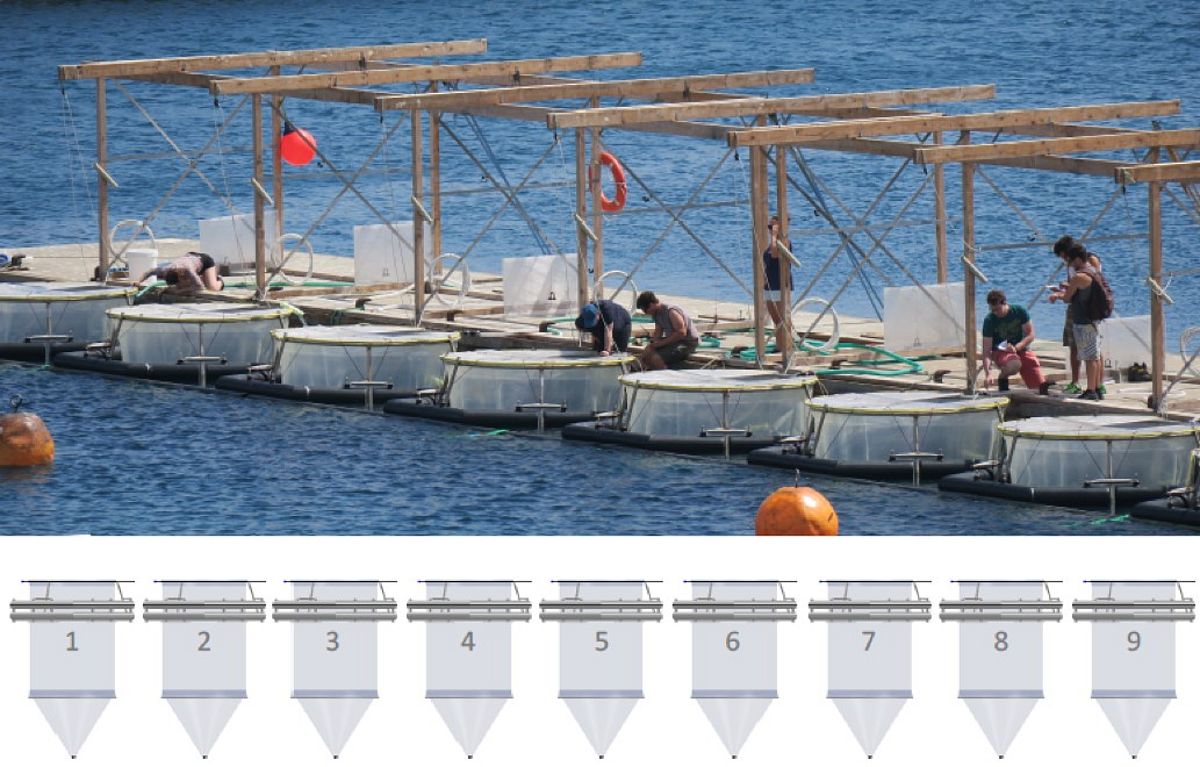Among the ocean-based CDRs Ocean Alkalinity Enhancement (OAE) and Artificial Upwelling are considered particularly promising options for CO2 removal. However, none of these approaches will be successful if the impacts on the marine ecosystem are not clear. Thus, we aim to study the potential negative impacts and co-benefits of ocean alkalinization and artificial upwelling on marine pelagic ecosystems and biogeochemical cycles.
The concept behind alkalinization is to spread large amounts of pulverized silicate or carbonate minerals onto the ocean surface (OAE) enhancing chemical weathering reactions whereby atmospheric CO2 is consumed. Compared to other negative emission technologies, OAE seems to be very promising in terms of its cost-effectiveness. However, not much is known about the potentially negative effects on the marine ecosystem. Therefore, through a series of mesocosm experiments in Gran Canaria, we will investigate the feasibility and potential side effects of ocean alkalinization on an enclosed natural plankton community.
The potential of Artificial upwelling as an Ocean CDR has partly been addressed during our Ocean artUp Project. Our preliminary results indicate that depending on the mode of upwelling (pulsed vs. continuous) and the deep-water nutrient signature (low vs. high silicic acid to nitrate ratio), artificial upwelling has the potential to either improve trophic transfer towards increasing fish production or enhance export of carbon-rich organic matter, favouring CO2 sequestration. If carbon is fixed by phytoplankton or macroalgae following higher than Redfield ratios, then artificial upwelling may serve as an efficient CO2 removal strategy. Ocean-CDR will build on this research to further explore the feasibility and effectiveness of artificial upwelling for the purpose of CO2 removal and assess its possible risks and negative side effects.




